Project 3.4.1: SMART STREET LIGHT SYSTEM¶
| Description | The Smart Street Light System is a simple project designed to automatically control lighting based on environmental conditions, such as light intensity. |
|---|---|
| Use case | This project finds utility in providing basic automatic and energy-efficient lighting tailored to specific needs. |
Components (Things You will need)¶
 |
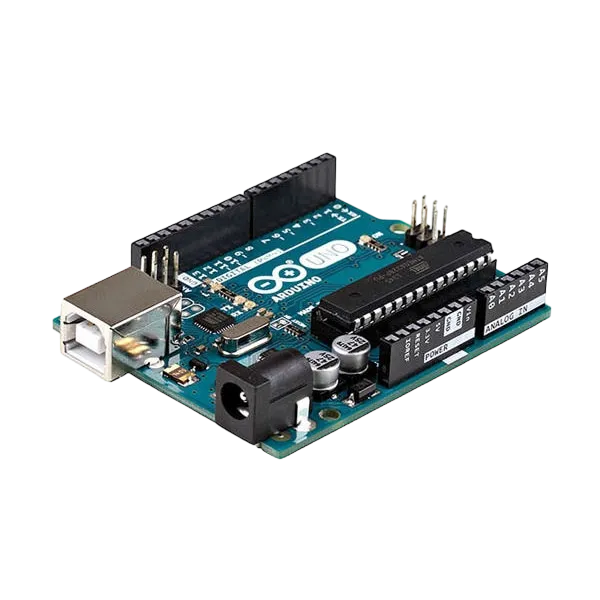 |
 |
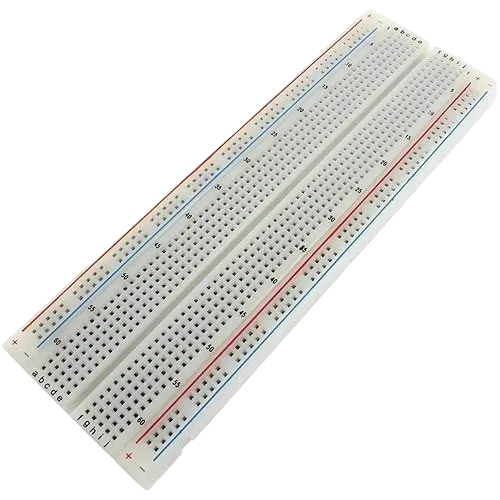 |
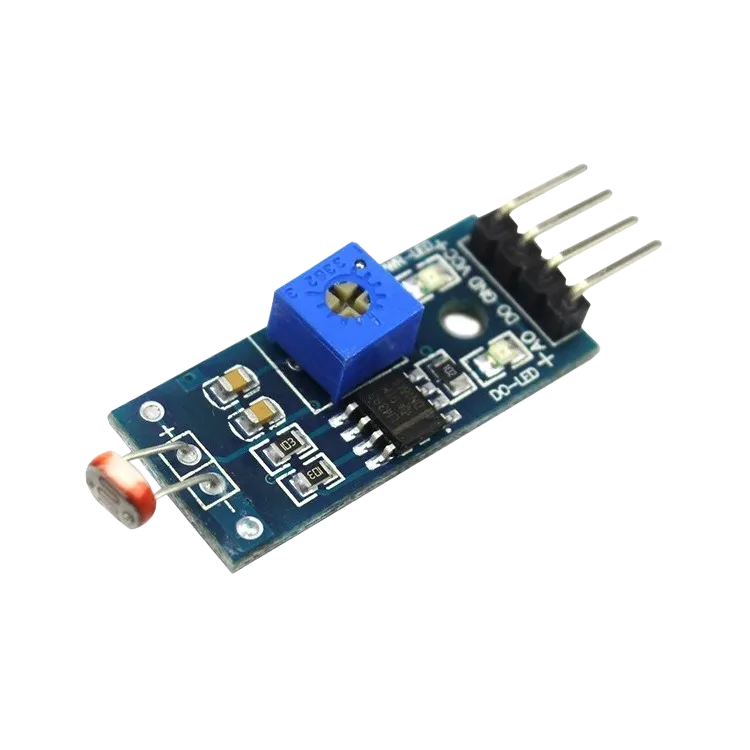 |
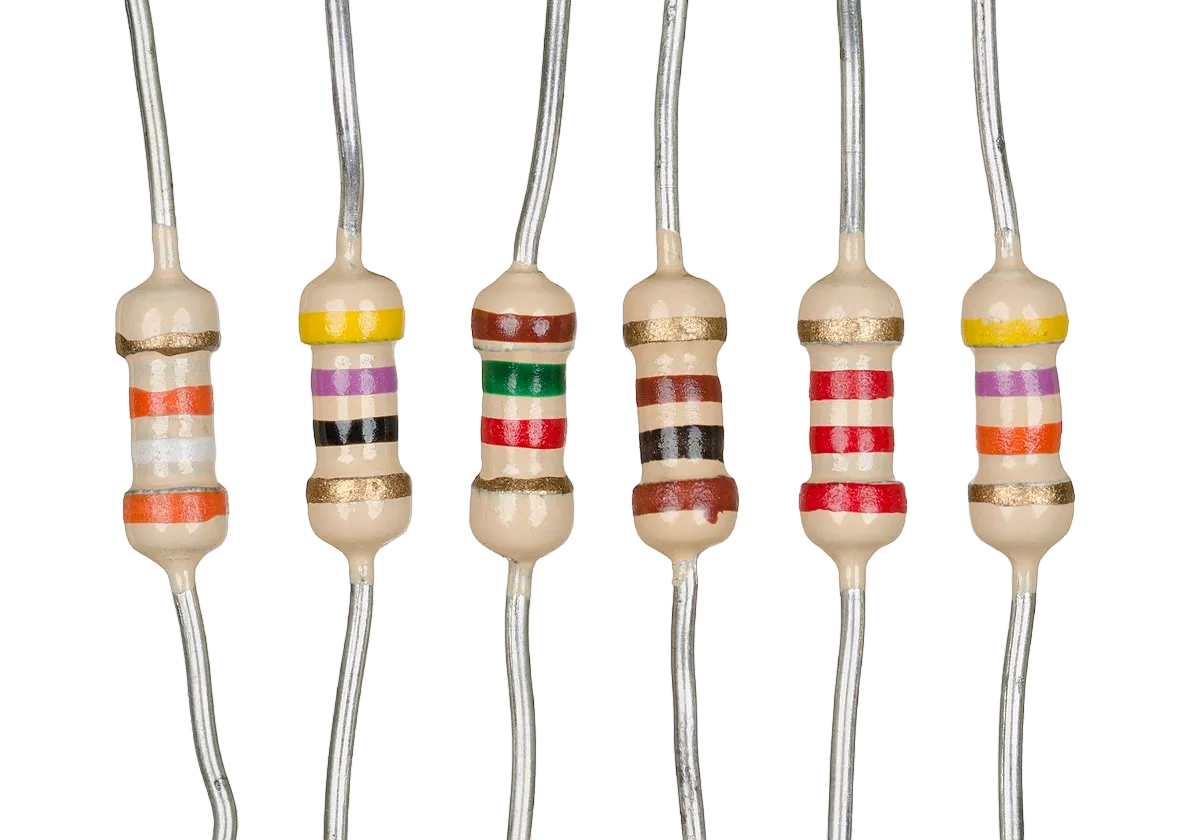 |
|---|---|---|---|---|---|
Building the circuit¶
Components Required:
- Arduino Uno Board: 1
- Arduino USB Cable: 1
- Breadboard:1
- White LED: 1
- Light Dependent Resistor(LDR) : 1
- Resistor : 1
- Jumper wire (red, blue, white and black male-to-male)
MOUNTING COMPONENTS ON THE BREADBOARD¶
Step 1: Take the breadboard, and insert the white LED into the vertical connectors of the breadboard.
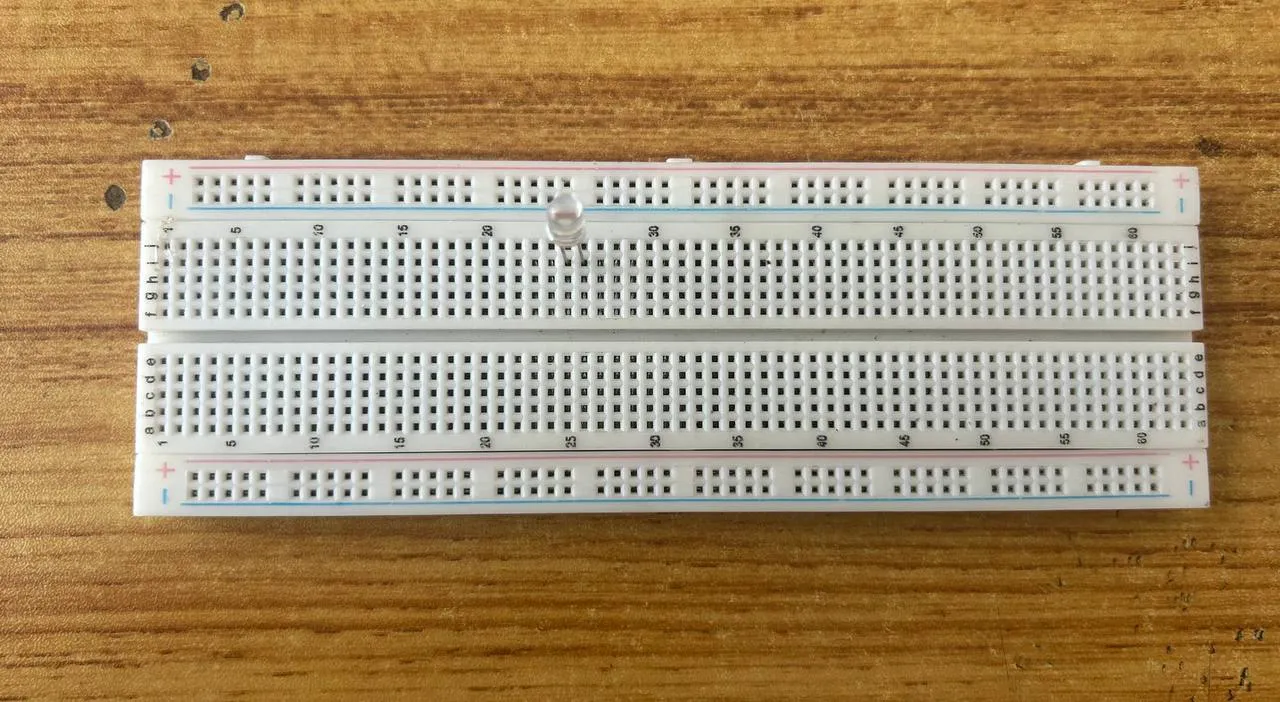
Step 2: Insert the resistor into the vertical connectors on the breadboard. Insert one side of the resistor under the positive pin of the LED on the breadboard.
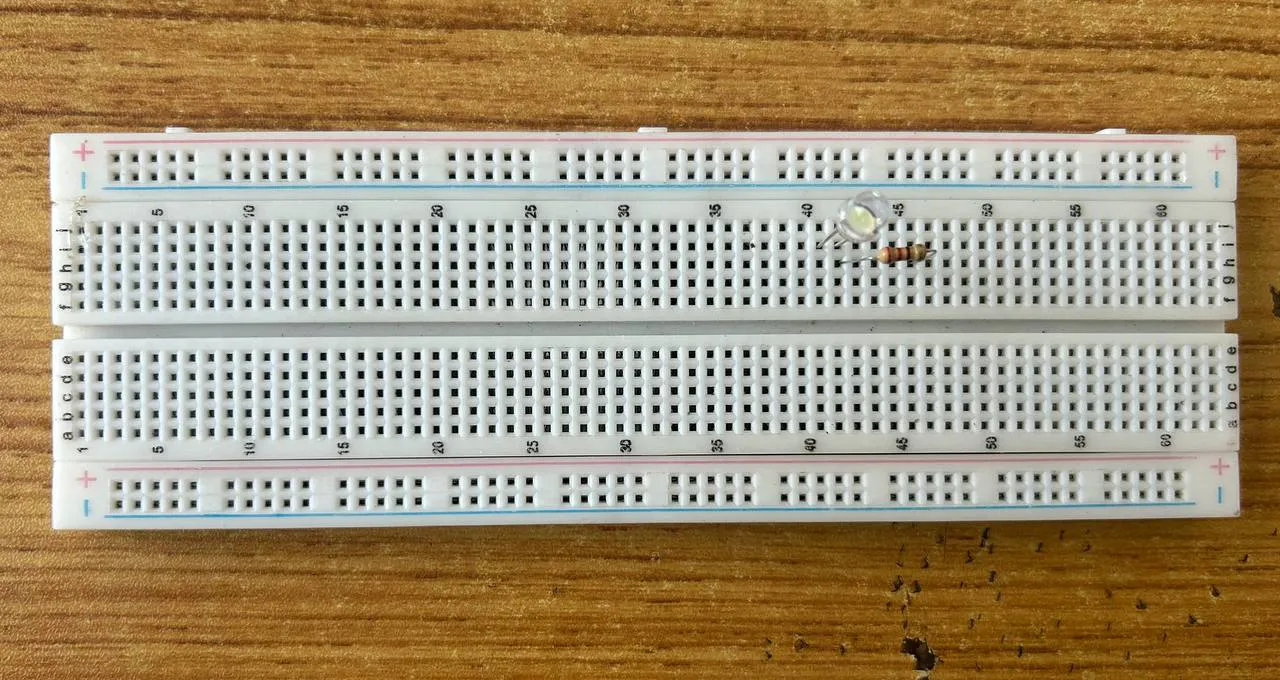
Step 3 Insert the Light Dependent Resistor(LDR) into the vertical connectors of the breadboard.
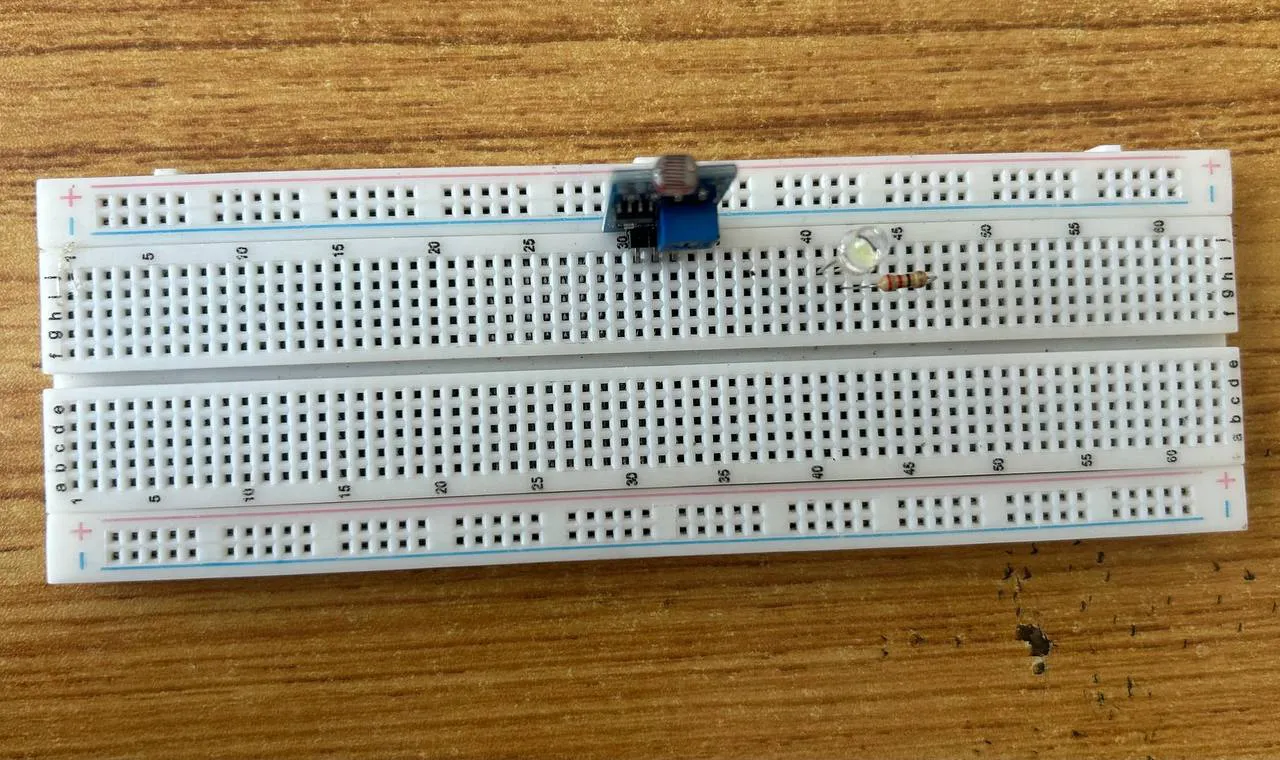
NB Make sure you identify where the positive pin (+) and the negative pin (-) is connected to on the breadboard. The longer pin of the LED is the positive pin and the shorter one, the negative PIN
WIRING THE CIRCUIT¶
Step 1: : Connect one end of red male-to-male jumper wire to VCC of the LDR on the breadboard and the other end to 5V on the Arduino UNO board.
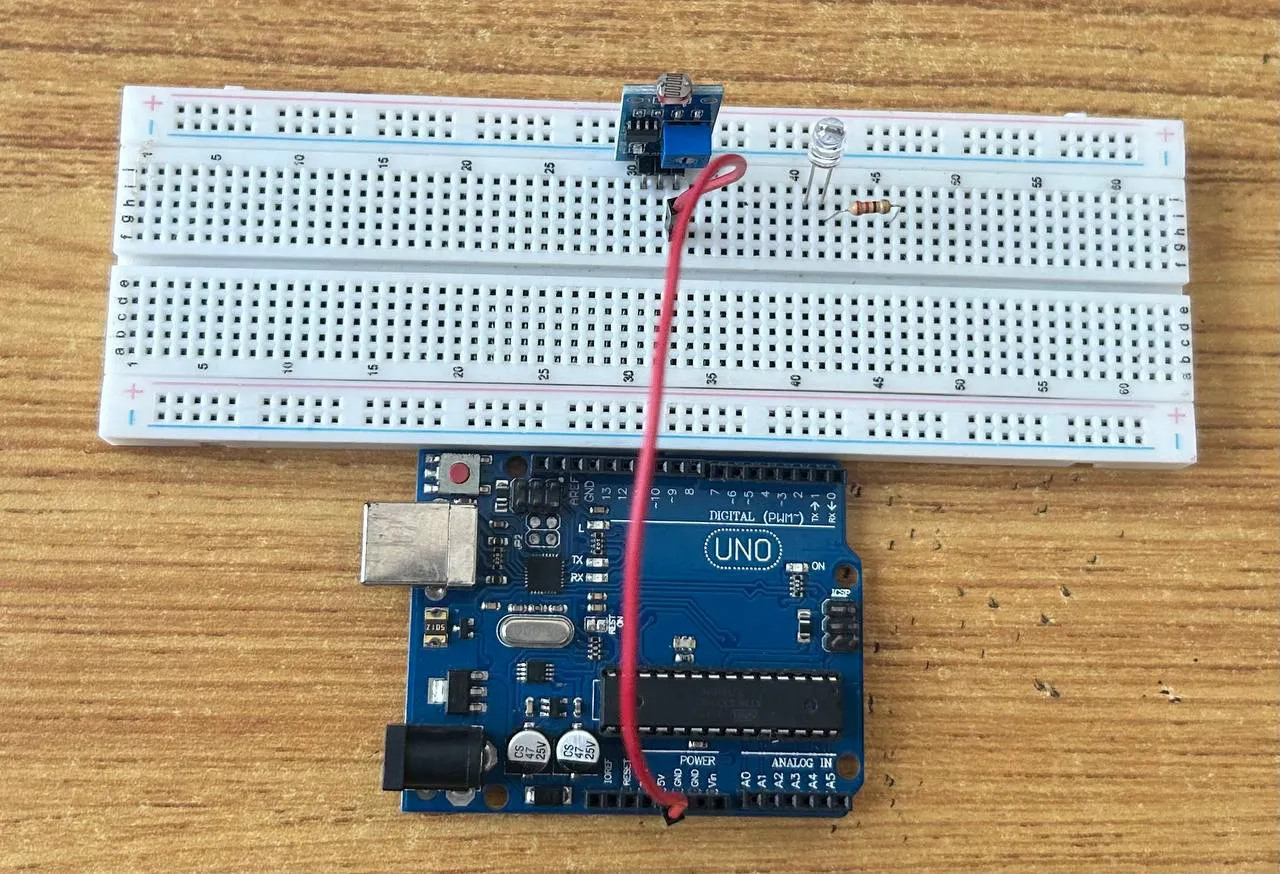
Step 2: : Connect one end of the blue male-to-male jumper to the OUTPUT of the LDR on the breadboard and the other end to A0 on the Arduino UNO board.
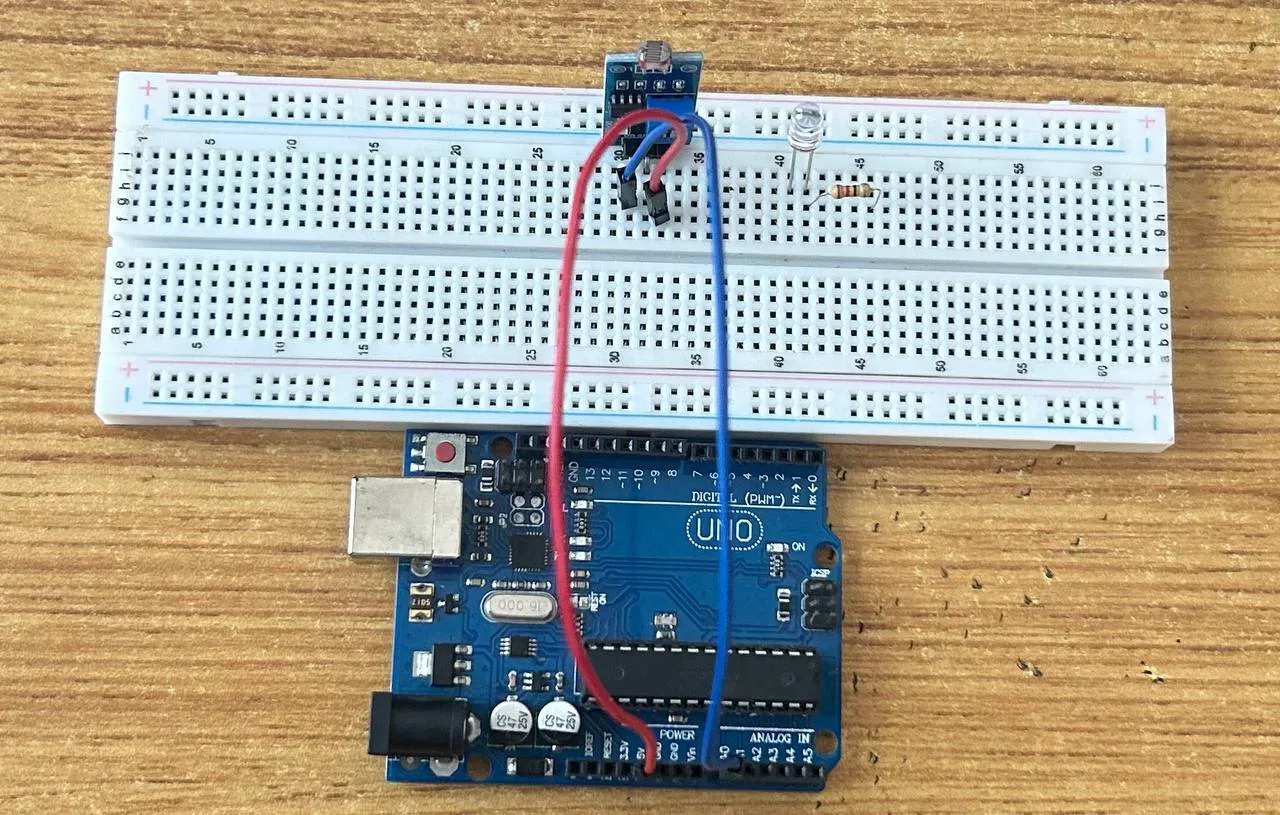 .
.
Step 3: : Connect one end of the black male-to-male jumper to GND of the LDR on the breadboard and the other end to GND on the Arduino UNO board.
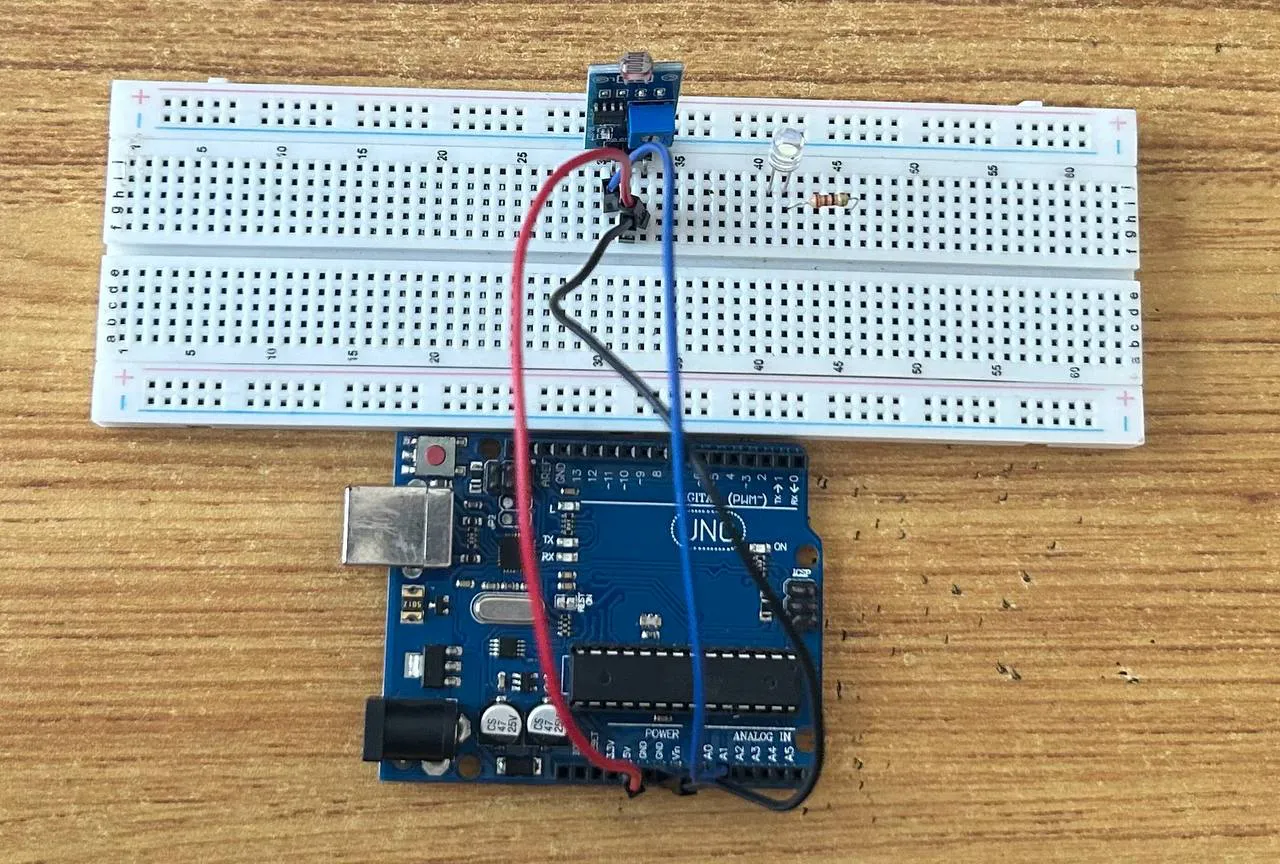 .
.
Step 4: Connect one end of the white male-to-male jumper wire to the positive pin of LED on the bread board to digital pin number 6 on the Arduino UNO board through the resistor as shown below.
 .
.
Step 5: Connect one end of the white male-to-male jumper wire to the negative pin of the LED on the breadboard and the other end to GND on the Arduino UNO.
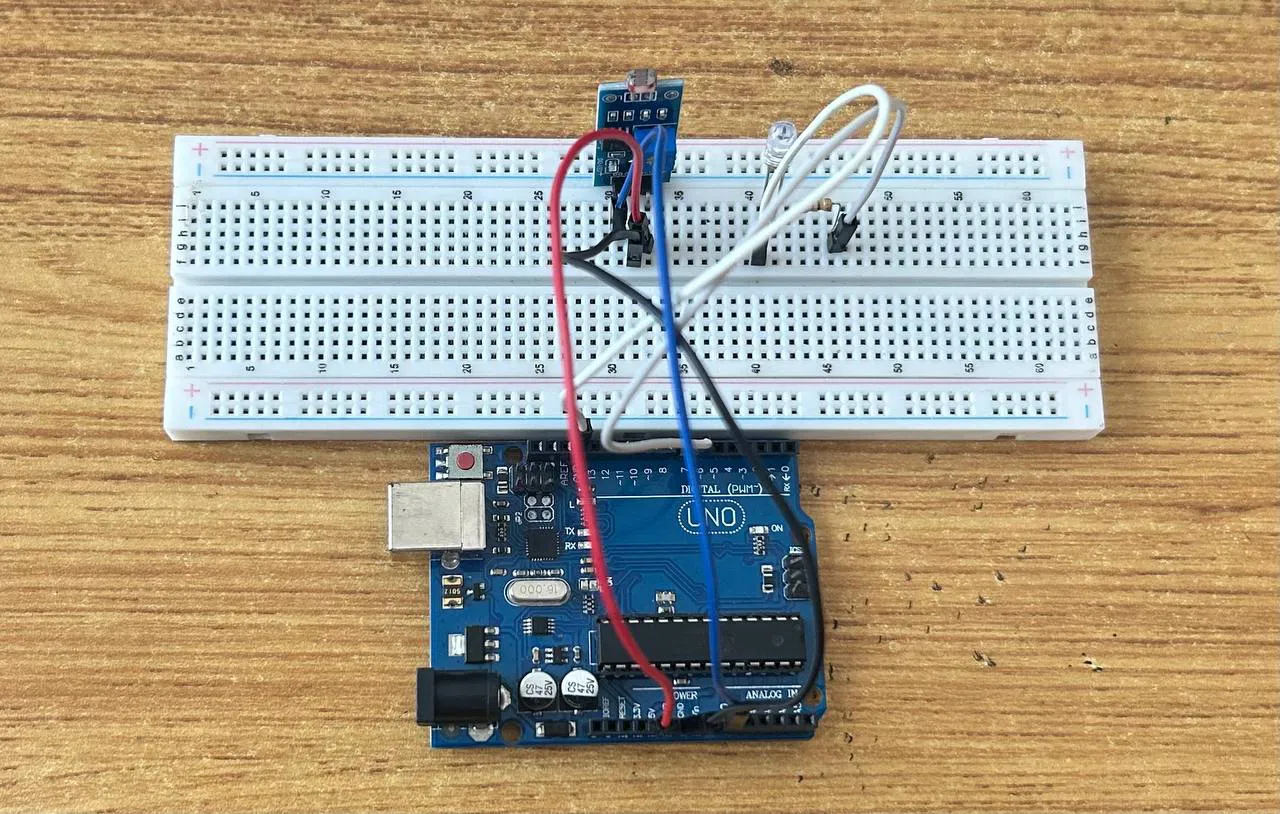 .
.
Make sure to connect the Arduino Board to the Laptop USB port using the USB cable in the Kit
PROGRAMMING¶
Step 1: Open your Arduino IDE. See how to set up here: Getting Started.
Step 2: Type the code into the Arduino IDE workspace
const int ledPin = 6;
void setup() {
// put your setup code here, to run once:
pinMode(ledPin, OUTPUT);
Serial.begin(9600);
pinMode(ldrPin, INPUT);
}
void loop() {
// put your main code here, to run repeatedly:
int lightLevel = analogRead(ldrPin);
Serial.print("Light Level: ");
Serial.println(lightLevel);
delay(500);
if (lightLevel > 500) { // Adjust threshold based on your environment
digitalWrite(ledPin, HIGH); // Turn LED on
} else {
digitalWrite(ledPin, LOW);
}
// Turn LED off
delay(100);
}
CONCLUSION¶
In a summary, the Smart Street Light project demonstrates a simple yet effective approach to automating lighting using Arduino. By utilizing an LDR to detect ambient light levels, this system can intelligently control LEDs, ensuring energy efficiency and convenience.